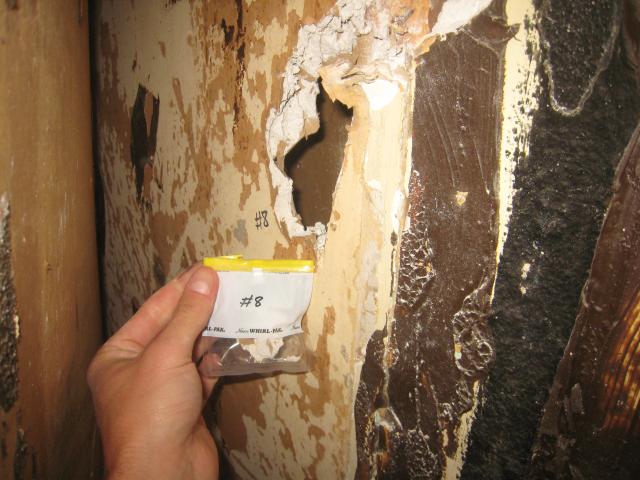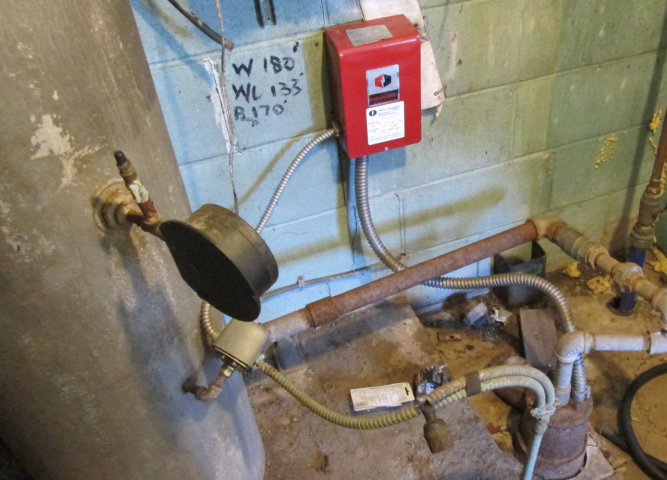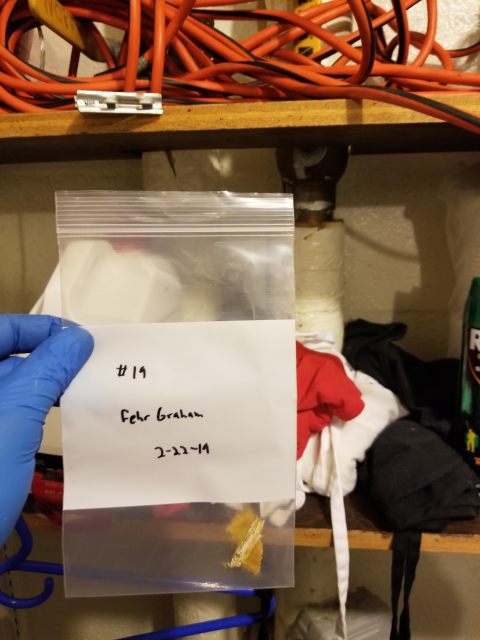Experts bring value during lead and asbestos inspection
Most people are aware that lead and asbestos exposure can have health-threatening consequences. When there is cause for concern, being aware of the dangers of asbestos, lead and other toxins – and knowing how to prevent and remove them safely – is the first step. Inspections by licensed experts who test for lead and asbestos can ensure safety and wellbeing for those involved.
Fehr Graham regularly encounters projects that require lead and asbestos inspections. Although materials using lead and asbestos are now more widely regulated, the detection processes, regulatory requirements and testing practices are required to be done by licensed professionals.
What is asbestos and what are its uses?
Asbestos is a naturally occurring mineral that contains long, thin fibers. The fibers are small and aerodynamic, allowing them to float in the air for two days or more. The Environmental Protection Agency (EPA) and other organizations distinguish between friable and nonfriable forms of asbestos-containing material. Friable means the material can be crumbled or reduced to powder by hand pressure. Friable asbestos-containing material is thought to release fibers into the air more readily than nonfriable material. Nonfriable material can still release fibers if it becomes deteriorated and disturbed.
Asbestos has been used in thousands of products throughout the years. It gained popularity in construction because it was readily available, affordable, fire resistant, strong and a poor heat and electric conductor. It also is typically impervious to chemical attacks. Fire proofing was one of the most common uses for asbestos. Asbestos is broken into three main categories for building materials: Surfacing, thermal system insulation and miscellaneous. Surfacing materials are asbestos-containing materials sprayed or troweled on surfaces for acoustical, decorative or fireproofing purposes. Thermal system insulation is used to inhibit heat transfer or prevent condensation on pipes, boilers, tanks, ducts and other components of hot- and cold-water, heating, ventilation and air conditioning systems. Miscellaneous materials are remaining items considered nonfriable, such as floor tile, ceiling tile, roofing felt, concrete pipes, outdoor siding and fabrics.
Health effects from asbestos exposure
Asbestos attacks your body in three main ways: Skin, ingestion and inhalation. When then the fibers lodge in skin the body forms a callous around the fiber. It is uncommon for asbestos to be ingested because most water supplies are well below EPA contamination guidelines. Inhalation is the most common exposure and most commonly leads to illness. When asbestos is inhaled, it can sometimes lead to asbestosis or lung scarring, rarely mesothelioma and other diseases found more frequently to those exposed to asbestos regularly.
What is lead and what are its uses?
Lead is an element that naturally occurs in earth's crust. It can be found in all parts of the environment and is used in a variety of products. One major use was in leaded gasoline. In today's homes, lead is mainly found in paint but can also be found in ceramics, pipes, plumbing materials, batteries, ammunition and cosmetics. Lead was typically added to products for durability and color.
In 1978, the Consumer Products Safety Commission banned the sale of lead-based paint for residential use after discovering the negative health effects lead exposure causes.
Health effects from lead exposure
Lead can affect people of all ages but has the largest effects on children age 6 and younger. Children exposed to lead can show symptoms of behavior and learning problems, lower IQ, hyperactivity, slowed growth, hearing problems, anemia and, in some cases, seizures, comas and death. This damage is irreversible and affects children throughout their lives. In adults, lead can cause miscarriages, premature birth, brain damage, low birth weight, elevated blood pressure, loss of sex drive and/or capability, physical fatigue and more.
When should a lead and/or asbestos inspections be done?
An asbestos and/or lead inspection should be performed during renovations, demolition, repairs or known lead-based paint projects. These events cause stable materials that could contain asbestos to be broken, crushed or disturbed in ways that could release asbestos into the air. The EPA and Occupational Safety and Health Administration say material samples that may contain asbestos must be taken before they are disturbed. There is a chance any building may contain asbestos and federal guidelines do not discriminate based on the building's age. Lead inspections mostly focus on projects the building dates to 1978 or earlier, as that is when lead-based paint was banned for residential use. But even today lead-paint is still acceptable to use in commercial or industrial settings. Generally, if the paint is in good condition, lead paint presents a low hazard risk. If the paint is deteriorating, it is considered a hazard that needs immediate attention.
What information can an inspection provide?
Inspectors are responsible for determining whether asbestos or lead-based paint containing harmful material is present in the building and assessing the physical characteristics of the asbestos or lead-containing material and building. That information is used to estimate the degree of hazards posed by the lead or asbestos material to develop a plan for managing it. The inspection itself involves an investigation of records for the specification of asbestos containing material or lead-based paint, an inspection of the building for suspect materials, sampling and analyzing suspect material and assessing the condition and location of the asbestos or lead-containing material and other building characteristics.
Fehr Graham experts have completed multiple asbestos and lead projects in a variety of settings. If you're wondering whether it's time for a lead and asbestos inspection before your next project, reach out to our experts. Every person deserves to live, work and play in a safe environment.
Collaborative, Insightful, Results-Driven Solutions
Fehr Graham provides innovative engineering and environmental solutions to help improve the lives and communities of our customers.




